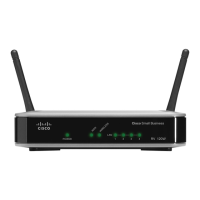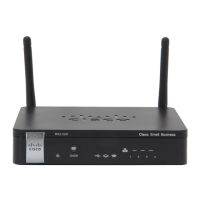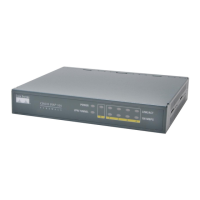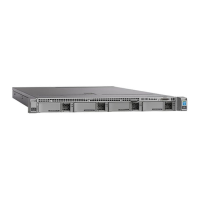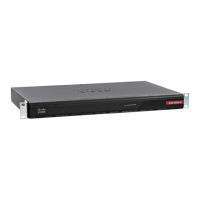Configuring Networking
Configuring IPv6
Cisco RV110W Administration Guide 54
2
Configuring Routing (RIPng)
RIP Next Generation (RIPng) is a routing protocol based on the distance vector
(D-V) algorithm. RIPng uses UDP packets to exchange routing information through
port 521.
RIPng uses a hop count to measure the distance to a destination. The hop count is
referred to as metric, or cost. The hop count from a router to a directly-connected
network is 0. The hop count between two directly-connected routers is 1. When
the hop count is greater than or equal to 16, the destination network or host is
unreachable.
By default, the routing update is sent every 30 seconds. If the router receives no
routing updates from a neighbor after 180 seconds, the routes learned from the
neighbor are considered as unreachable. After another 240 seconds, if no routing
update is received, the router removes these routes from the routing table.
On the Cisco RV110W, RIPng is disabled by default.
To configure RIPng:
STEP 1 Choose Networking > IPv6 > Routing (RIPng).
STEP 2 Check Enable.
STEP 3 Click Save.
Configuring Tunneling
6 to 4 Tunneling
IPv6-to-IPv4 tunneling (6-to-4 tunneling) allows IPv6 packets to be transmitted
over an IPv4 network. 6-to-4 tunneling is typically used when a site or end user
wants to connect to the IPv6 Internet using the existing IPv4 network.
To configure 6-to-4 tunneling:
STEP 1 Select Networking > IPv6 > Tunneling.
STEP 2 In the 6 to 4 Tunneling field, check Enable.
STEP 3 Choose the type of tunneling (6to4 or 6RD [Rapid Deployment]).
STEP 4 For 6RD Tunneling, choose auto or manual.
